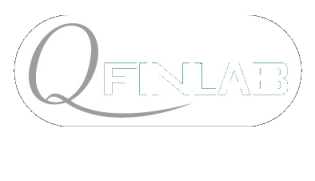
During the Financial Engineering course in the A.Y. 2024/2025, the sixth edition of the Best Pitch Award contest took place. Continuing the tradition of the previous editions (1ˢᵗ, 2ⁿᵈ, 3ʳᵈ, 4ᵗʰ, and 5ᵗʰ), this year’s competition once again gave students the opportunity to develop and showcase one of the most valuable skills in today’s financial world: delivering a sharp, captivating, and convincing pitch.
A pitch, in essence, is a lightning-fast, high-impact story. In the brief time span of an elevator ride—about three minutes—the speaker must capture the attention of a decision-maker, spark their curiosity, and leave them eager to hear more. At its core, a strong pitch is built around three essential pillars: identifying a clear and relevant problem, proposing an innovative and thoughtful solution, and delivering a compelling conclusion.
This year, twenty-two teams took place to the challenge. Each group translated the key insights of its Final Project into a concise and engaging narrative, aimed not just at informing, but at persuading. On presentation day, the pitches were evaluated by a jury composed of students and professors, ensuring a rich and balanced perspective grounded in both peer feedback and academic expertise.
Among all participants, five teams particularly stood out for their ability to communicate complex financial ideas with clarity, creativity, and impact — earning the Best Pitch Award 2024/2025.
The winning projects of the ‘Best Pitch Award AY 2024/2025’ are:
Calibration and Monte Carlo for Additive Subordinators
Calibration and pricing of equity derivatives using additive processes, with a focus on the Additive Normal Tempered Stable (ATS) model: it could seem not an easy task! Three models are developed and compared: ATS with constant asimmetry parameter, Brownian motion time-changed by a piecewise Lévy subordinator, and ATS with time-varying parameters. Among them, the time-varying ATS model emerges as the most accurate and efficient, achieving the best fit in terms of RMSE and MAPE. The study employs both closed-form pricing via the Lewis formula and Monte Carlo simulation based on FFT inversion techniques, confirming the robustness and precision of the ATS framework. Finally, the calibrated models are used to price both arithmetic and geometric Asian call options, highlighting the flexibility of the approach in dealing with exotic derivatives.
by Davide Matteo Bottinelli, Francesco Ligorio, Dalila Rosati
Ref. Papers: Azzone, Baviera (2024). Is (Independent) Subordination Relevant in Equity Derivatives? Applied Stochastic Models in Business and Industry, 41(3), e2904. (Open Access) doi.org/10.1002/asmb.2904
Azzone, Baviera (2023). A fast Monte Carlo scheme for additive processes and option pricing. Computational Management Science, 20(1), 31. (Open Access) doi.org/10.1007/s10287-023-00463-1
Managing smile Risk: application to price a CMS contract
This project focuses on pricing a structured certificate with a Constant Maturity Swap (CMS) as the underlying. Instead of using standard Monte Carlo or tree-based methods, we considered a bounding approach (upper and lower bounds) to frame the price based on CMS option values options. A key part of the pricing process is building the implied volatility curve, which we derive from market quoted Euribor swaption data using two models: the SABR model and the Additive Bachelier model. For each model, we explore two calibration strategies: a direct method that estimates all parameters at once and a cascade method that uses known relationships between parameters to simplify the process.
by Donato Augenti, Dario Delmonaco, Ulysse Abel Grimault, Davide Rota
Ref. Papers: Hagan, Kumar, Lesniewski & Woodward (2002). Managing smile risk. The Best of Wilmott, 1, 249-296.
Hagan (2003). Convexity conundrums: Pricing CMS swaps, caps and floors. Wilmott Magazine 1, 38.
Optimal Statistical Arbitrage in pair trading via Mean-Reverting Models
The project focuses on a statistical arbitrage strategy in pair trading modeled by an Ornstein–Uhlenbeck (OU) process. Particular attention is given to the inclusion of stop-loss mechanisms and leverage optimization, with closed-form expressions for long-run return. Three main components are developed and analyzed: analytical profitability conditions under transaction costs, empirical calibration from high-frequency futures data (Heating Oil and Gas Oil), and an efficient bootstrap procedure for confidence interval estimation. The strategy is also applied to alternative asset classes, including government bond futures and cryptocurrencies, validating its robustness and generalizability across markets.
by Marco Amarilli, Giacomo Kirn, Ismail Oulkhir
Ref. Paper: Baviera & Santagostino Baldi (2019). Stop-loss and leverage in optimal statistical arbitrage with an application to energy market. Energy Economics, 79, 130–14.
Pricing of Multi-Name Credit Product: an Asset-Backed security
This project focuses on multi-name credit products, with particular emphasis on the structuring of tranches over a homogeneous mortgage portfolio of ab Asset-Backed security (ABS). The core of the project involves calibrating a double t-Student copula model under the Large Homogeneous Portfolio (LHP) assumption, with the objective of replicating the market-implied correlations observed across different tranches. Additionally, the impact of the LHP approximation on pricing is investigated, alongside the use of the Kullback-Leibler (KL) expansion to enhance computational efficiency. The analysis also includes a comparison with alternative models such as the Vasicek model and the Gaussian copula model proposed by Li.
Ref. Paper: Hull & White (2004). Valuation of a CDO and an n-th to Default CDS without a Monte Carlo Simulation, Journal of Derivatives 12(2).
Prepayment Risk: Predicting Mortgage Prepayment Rates with Neural Networks
The objective is to develop a deep learning model designed to predict mortgage prepayment rates, using a sequential neural network trained on historical data from fixed-rate loans. The model incorporates a comprehensive set of features, including contractual terms (e.g., outstanding amounts, maturity), seasonal indicators, and dynamic market-driven variables (e.g., 3-month Euribor, IRS rates), to capture the complex interplay between financial incentives and borrower behaviour. A tailored hyper-parameter optimization framework and a volume-weighted loss function are employed to enhance predictive accuracy. Comparative analysis demonstrates that the neural network outperforms traditional logistic regression.
by Maxence Guyot, Pierpaolo Monaco
Ref paper: Baccaglini, Cozzi, Malacchia, & Sitzia (2021). A Neural Network Approach for the Estimation of Mortgage Prepayment Rates. Available on ssrn.

